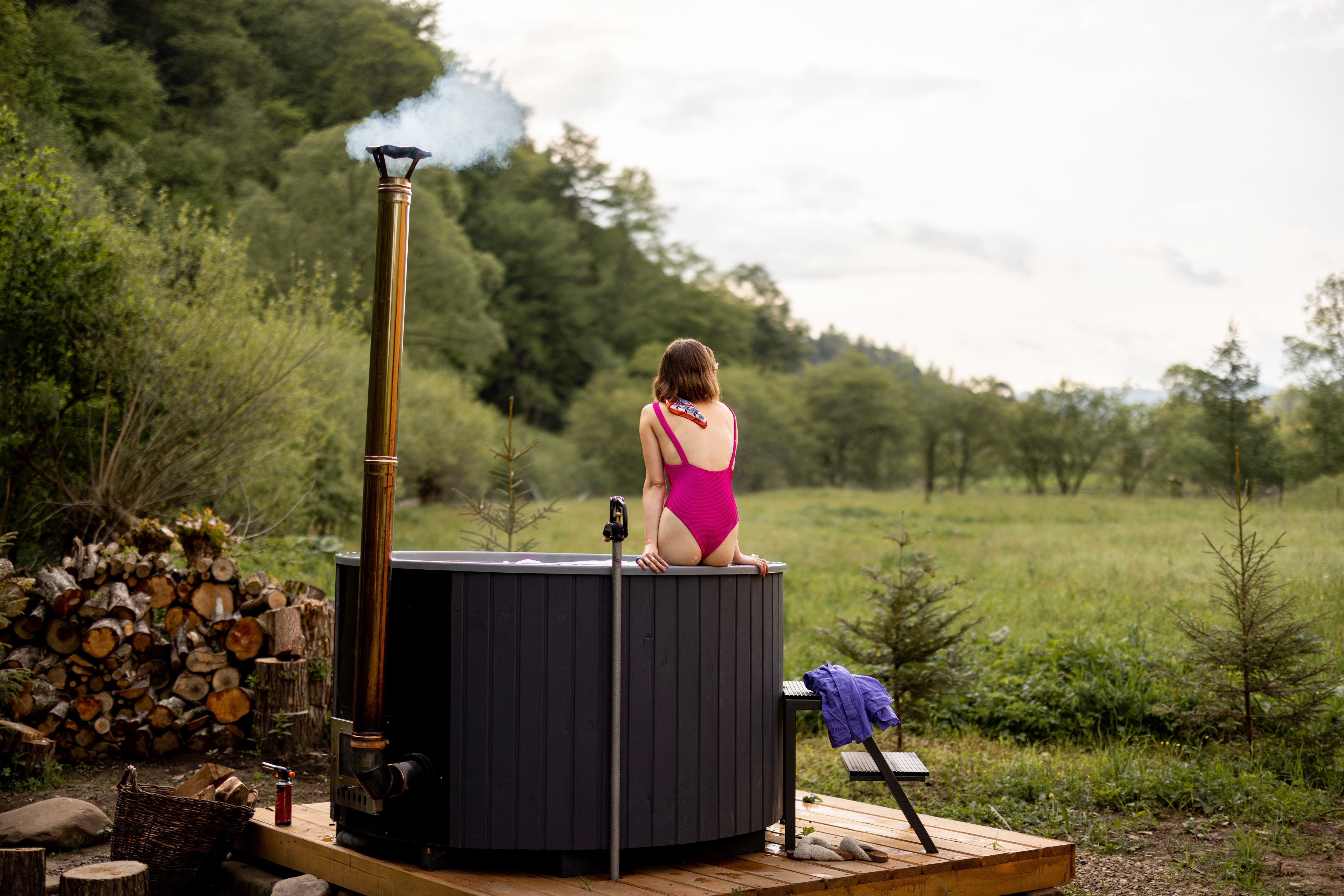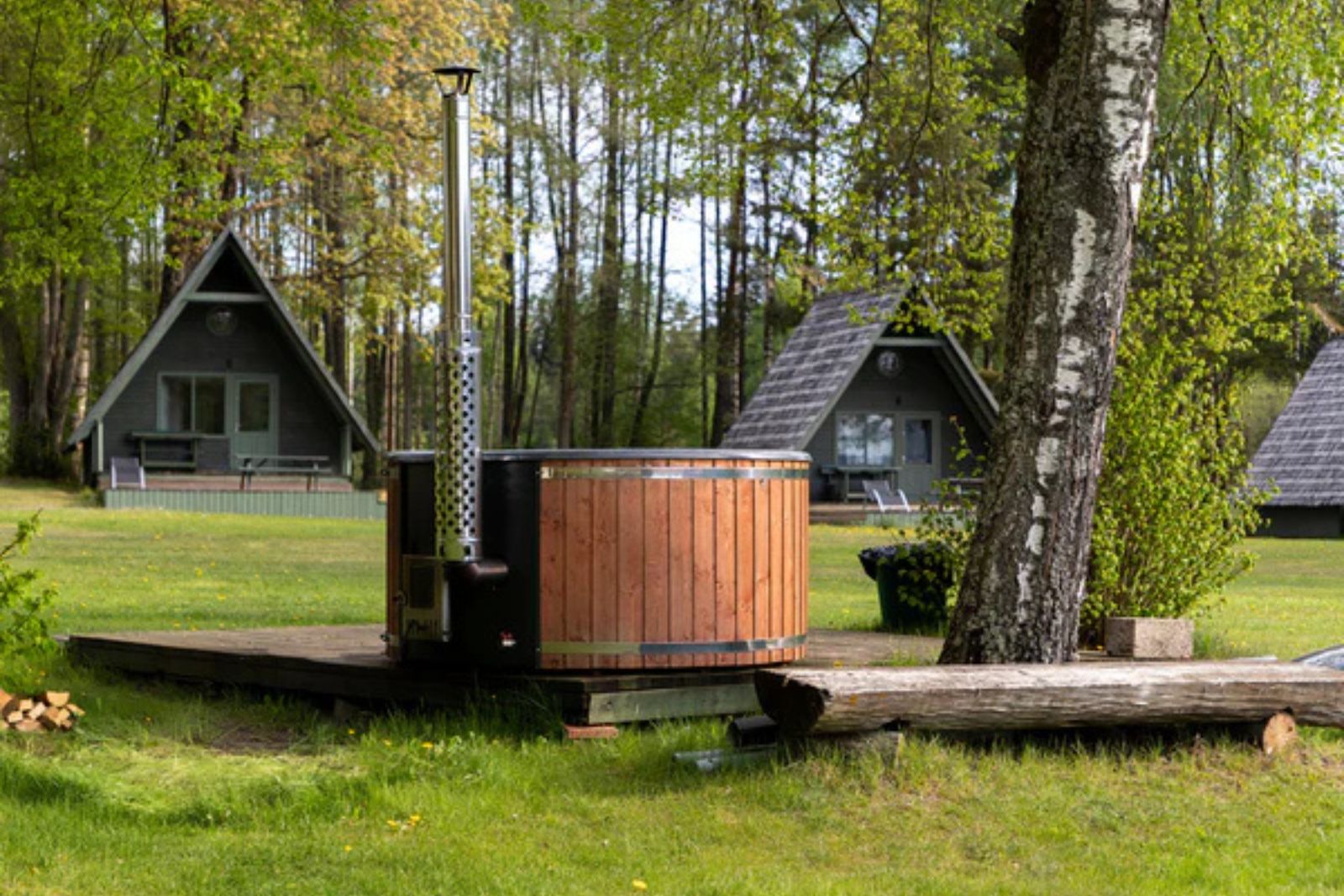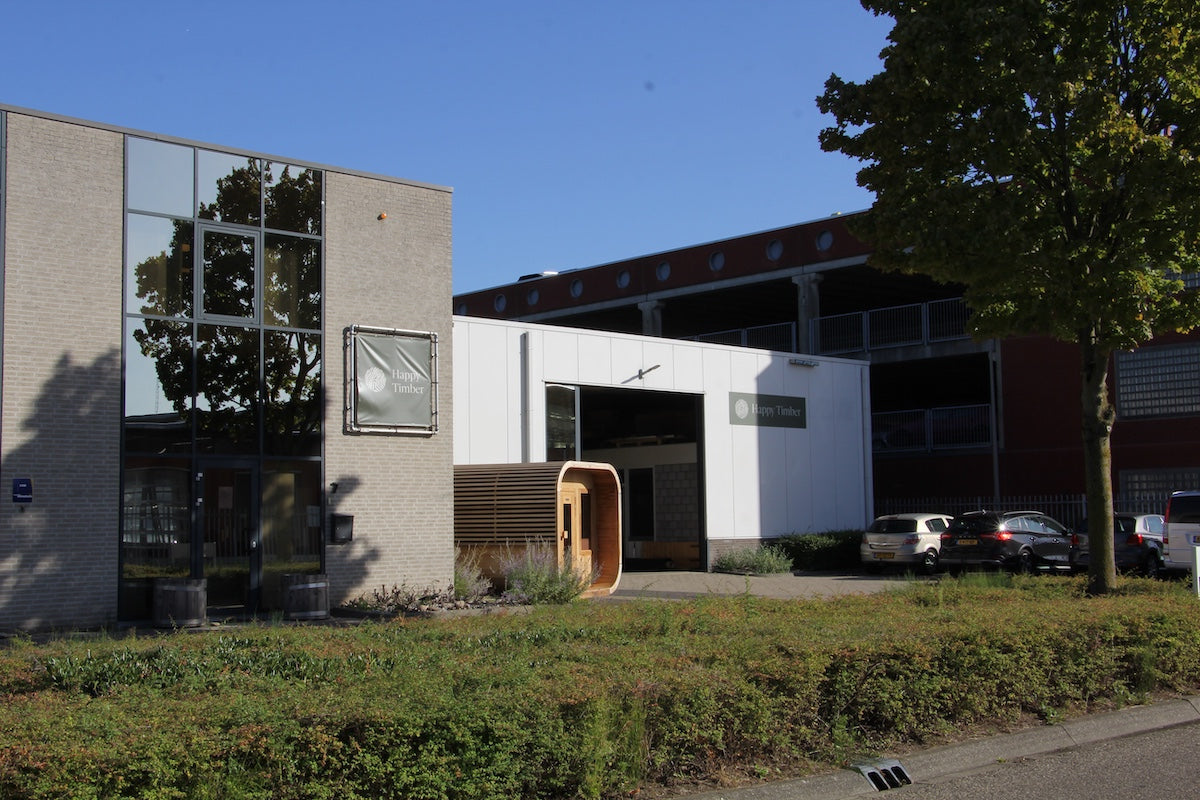
What wood do you need to heat a hot tub?
You have a hot tub in your garden or are thinking about getting one. A wonderful idea. But before you sink into that steaming water under the stars, there's one crucial point you can't ignore: the fire needs to be lit. And not just with some wood you happen to have lying around in the bottom of the shed. No, for a well-heated hot tub , the right wood is crucial.
You might think: wood is wood. But just like with wine and cheese, there's more nuance to it than you might expect. Don't worry—you don't have to become a timber merchant to keep track of the wood for the trees. In this blog post, you'll learn exactly which wood you need for your hot tub, what to avoid, and how to handle storage and heating wisely.
Why the right wood is important for your hot tub experience
You probably know the feeling: you throw some wood in the stove, light it, and wait patiently. But the water stays lukewarm, the smoke stings your eyes, and the neighbors ask if something's on fire. Not exactly the start of a relaxing evening.
The cause? Poor wood selection. The type of wood determines how quickly, evenly, and cleanly your hot tub heats up. Good wood ensures a beautiful flame, minimal smoke, long-lasting heat, and a clean flue. Poor wood, on the other hand, smokes, crackles, leaves residue in the stove, and takes forever to heat up.
And if you choose the right type, you'll need to refill less often during your hot tub evening — which is nice when you're just relaxing and don't feel like lugging around logs.
Hardwood vs. Softwood: What's the Difference?
When it comes to firewood, we generally distinguish between hardwood and softwood. The difference lies not only in its weight, but especially in how it burns.
Hardwood , such as oak, beech, or ash, comes from deciduous trees. It burns slowly, gives off a lot of heat, and leaves less mess in your stove. Ideal for a hot tub .
Softwoods , such as spruce or pine, come from coniferous trees. These woods burn quickly and hot, but are often resinous, producing more smoke and soot. Moreover, they burn so quickly that you constantly have to add more wood to maintain the temperature. Not exactly practical when you're just relaxing and leaning back.
In short: for your hot tub, it's best to choose a good hardwood. Preferably one that's well-dried, so it burns well right away.
Which types of wood are suitable for your hot tub?
Let's take a look at the most popular wood types. Not in a list, but simply, in plain language.
Oak: Oak is perhaps the most well-known hardwood. It's heavy, sturdy, and burns long and evenly. This makes it ideal for long-term heating, such as in a hot tub . Its heat output is high and stable. However, it's important that oak is well-seasoned. If it's still too wet, it can contain acids that release extra smoke or odor. Dry oak, on the other hand, burns beautifully and keeps your water hot for hours.
Beechwood: Beechwood is also an excellent choice. It ignites quickly, so you don't have to wait endlessly for the fire to get going. At the same time, it burns relatively long and cleanly. A good compromise for those who value both speed and warmth. Many hot tub users swear by beechwood for its pleasant aroma and gentle combustion.
Ash: Ash is often called the all-rounder among firewood. It dries relatively quickly, is easy to burn, and produces minimal spattering. Even when it's slightly less dry, it still performs perfectly. It gives off a lot of heat and is pleasant to use—even for beginners.
Birch: Birch burns a bit faster than other hardwoods, but it has another advantage: it looks beautiful, smells fresh, and is easy to light. The white bark creates a crisp fire that gets going quickly. You could use it to start your fire, and then switch to oak or ash for the long run.
Types of wood to avoid
Maybe there's still a pile of wood in the back of your shed, from an old project or that fence you tore down a while back. It's tempting enough to just give it a try. Still, it's wise to pay close attention to what you put in your stove.
It's best to avoid using coniferous wood . Pine or spruce may seem attractive because of their fast combustion, but they're full of resin. This produces a lot of smoke, pollutes your flue, and can cause long-term damage to your stove. Not ideal.
Treated , painted , or glued wood is also a no-go. It contains substances that are released during combustion and are harmful to both humans and the environment. After all, your hot tub is meant to be a place for relaxation, not for chemical experiments.
Also be careful with damp or moldy wood. If the wood smells musty, is dark brown, or feels like a sponge, it's far from ready for use. You can recognize dry wood by a hollow sound when you knock two blocks together, slight cracks in the surface, and a low-scented smell.
How much wood do you actually need?
Of course, that depends on the size of your hot tub and the outside temperature. But on average, a 1500-liter hot tub will heat up in about 2.5 to 3 hours with about 2 to 3 wheelbarrows of good, dry wood.
Don't burn everything at once, but add in stages. Start with small logs or kindling and build the fire slowly. Once the fire is burning well, you can switch to larger logs for long-lasting warmth. Once you've reached a consistent temperature, you'll usually only need to add more logs occasionally.
A small advantage of experience: after a few uses, you'll know exactly how much wood you need for your preferred temperature. And that saves hassle on cozy evenings.
Storing wood: keeping your stock usable
You've found the perfect wood. Now you just need a good place to store it. It's best to store it in a dry, well-ventilated area. Don't place it directly on the ground—use a pallet or rack to allow airflow underneath. An open shed or lean-to is ideal: sheltered from rain, yet still allowing for sufficient air circulation.
If necessary, cover the wood with a tarp, but make sure there's room on the sides for ventilation. Completely wrapping it is a recipe for mold. Also, maintain a rotation system: use the oldest wood first, and always let new wood dry for another season.
Added ambiance: scented wood. For those who want to enhance their hot tub experience with something extra, some woods release a subtle fragrance when heated. Think cherry or applewood. While not intended to heat the entire hot tub—they're too rare and burn out too quickly—a handful added to the fire will create a soft fragrance that will make your evening just that little bit more special.
Note: This is pure wood, not scented kindling. Keep it natural.
Don't feel like chopping yourself?
Sometimes you just don't have the time or inclination. And not everyone has a splitting axe and a pile of logs lying around the house. Fortunately, you can find custom-made firewood from numerous suppliers: split, cut to length, and neatly packaged. Always ask about the moisture content—it should be below 20%, preferably around 15%.
Make sure you choose wood that suits your usage schedule. Do you use the hot tub weekly? Then a larger supply is helpful. Is it more of a weekend treat? Then a small stack will suffice. In any case: with good wood, relaxation begins the moment you light it.
Need advice on using wood for your hot tub, or do you have questions about maintaining your stove? Feel free to contact us or request a free quote – you'll receive a response within one business day.
Frequently asked questions about wood for the hot tub
Can I use pallets or scrap wood for the hot tub?
Better not. Pallets are often treated with glue or chemicals. These substances are released during combustion and can be harmful.
How long should wood dry before use?
Depending on the species: an average of 1 to 2 years. Oak, for example, takes longer than birch. Air circulation is important.
How do I know if wood is dry enough?
Dry wood is lightweight, sounds hollow, and has cracks in the end grain. To be sure, you can use a moisture meter.
How do I heat up my hot tub fastest?
Use dry kindling to build the fire, then add larger logs. Make sure the air supply is open while starting.
Can I leave wood outside in the summer?
Yes, as long as it's under a roof and not on the ground. Provide ventilation and, if necessary, cover the top to protect from rain.




